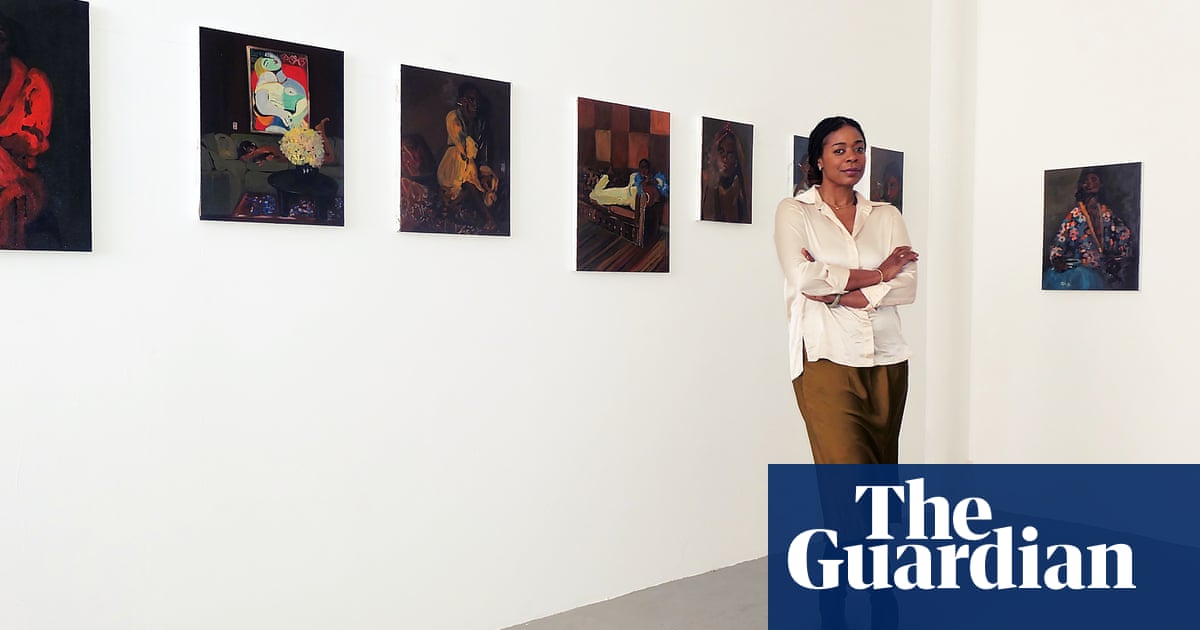
remember the moment my sister told me she was having a baby. I was spending the evening with a group of friends and, halfway through, Kate said she needed a word. We ducked into a bedroom, where she looked at me so solemnly that I ransacked my brain for anything I could possibly have done wrong in the past half-hour.
The seriousness of her announcement made me giggle out loud. I had a flashback to the pair of us as kids, when a secret meeting like this meant we’d broken something in the house and were working out how to present the news to our parents. Plus, the thought of my little sister being a mum was innately funny. Not that Kate wasn’t ready for the role – she was in her mid-30s and keen to get on with it. I just couldn’t see myself as anyone’s aunt.
My own path to such “conventional” adulthood stalled somewhere in my 30s, not through choice or any dramatic event, but through an invisible winnowing of opportunities. I was – am – still single. I didn’t – don’t – regret my own lack of children. But becoming an aunt brought with it a phantom modifier, one that echoed across my empty flat, even though no one had spoken it out loud.
Spinster.
There are many reasons we no longer use that term: its misogynist undertones of sour dessication, or bumbling hopelessness, to start with. The label went out of official usage in 2005 when the government dropped it from the marriage register, thanks to the Civil Partnership Act and, in an age when becoming a wife is no longer necessary or definitive, it seems almost redundant.
But it hasn’t gone. Nor has it been replaced by anything better. So what else are we formerly-known-as-spinsters supposed to call ourselves: free women? Rather insulting to everyone else, I imagine. Lifelong singles? Sounds like a packet of cheese slices that’ll last for ever in the back of your fridge.
It’s important we find an identity, because our number is swelling. The Office for National Statistics shows that women not living in a couple, who have never married, is rising in every age range under 70. In the decade-and-a-half between 2002 and 2018, the figure for those aged 40 to 70 rose by half a million. The percentage of never- married singletons in their 40s doubled.
And it’s not just a western phenomenon. In South Korea, the rather pathetic figure of the “old miss” has become the single-and-affluent “gold miss”. In Japan, unmarried women over the age of 25 are known as “Christmas cake” (yes, it’s because they were past their sell-by date). Shosh Shlam’s 2019 documentary on China’s sheng nu explores these “Leftover Women” and the social anxiety they cause as traditional marriage models are upended.
Singleness is no longer to be sneered at. Never marrying or taking a long-term partner is a valid choice. For a brief spurt, it even appeared that the single-positivity movement was the latest Hollywood cause, with A-listers such as Rashida Jones, Mindy Kaling and Chelsea Handler going proudly on the record about how they had come to embrace their single lives. Jones and Kaling have since found love; Handler announced on her chatshow last year that she’d changed her mind and really wanted a relationship. And when Emma Watson (also not single) announced to Vogue she was “self-partnered” I found myself suppressing a gag reflex. Give it another 10 years, I wanted to say. Then tell me how empowering it is going to parties/dinner/bed alone.
But there I go, living down to the spinster stereotype of envy and bitterness. How is it possible that, despite being raised by a feminist mother and enjoying a life rich with friendships and meaningful employment, I still feel the stigma of that word? Or fear that, even in middle age, I haven’t achieved the status of a true adult woman?
Perhaps I should blame the books I’ve read. Through a formative literary diet of Jane Austen, Charles Dickens and PG Wodehouse, I grew up alternately pitying and laughing at spinsters, their petty vendettas and outsize jealousies born out of their need for significance in a world that found no use for them. They were figures of fun and frustration, not women I was ever expected to relate to. After all, like many spinsters-to-be, I never considered myself on that track. I’d find a partner eventually – even Bridget Jones managed it. Doesn’t everyone?
No they don’t. I assumed that my own situation was a temporary aberration, one that required no sense of emergency or active response. My social calendar was full, my work constantly introduced me to new people. Mother Nature would, surely, pick up the slack.
But now my little sister was having a baby, and I was single and approaching a big birthday. The odds were increasingly against me – even if the notorious statistic that you’re more likely to be killed by a terrorist than you are to find a husband after the age of 40 has, in recent years, been debunked. The fact that the average age at marriage (in heterosexual couples) has never been later – 31.5 for women in the UK, 33.4 for men – offers little comfort, because the singles market is at its most crowded between the ages of 35 and 47, and in that market women outnumber men.
One of the cruellest tricks spinsterhood can play is to leave you feeling like an outlier and a freak – yet my status is far from unique as the statistics show. I see that in my own close friendship group – almost a dozen of us are never-married in our late 30s and early 40s, and none through choice.
There’s no avoiding that our romantic opportunities have dwindled as the pool of age-appropriate men has emptied. Annually, we manage a small smattering of dates between us. Most of us have grown weary of online dating, which requires you to treat it as an all-consuming hobby or part-time job. We’re tired of Tinder, bored of Bumble – I’ve even been ejected by eHarmony, which, last time I logged on, told me it couldn’t find me a single match.
In our 20s, my friends and I used to revel in gossip and talk endlessly about the guys we were interested in; now, the subject is sensitively avoided, even within the sisterhood. The only people who do tend to ask whether we’re seeing anyone are complete strangers, because relationship status is still considered a key component of small talk, a vital piece of the information trade, essential in categorising someone’s identity.
My friend Alex has a range of responses to the question “And do you have another half?” depending on which she thinks the other person can take. Her nuclear option, “No, I’m a whole person,” is deployed only in the most desperate of circumstances.
As we age, the distance between our shared life experiences and viewpoints has only been widening. Professor Sasha Roseneil, author of The Tenacity of The Couple-Norm, published in November by UCL Press, says: “All sorts of processes of liberalisation have gone on in relationships, in the law and in policy.” Her research focused on men and women between the ages of 30 and 55, the period in mid-life “when you’re expected to be settled down in a couple and having kids”.
“But what our interviewees told us was that there remains at the heart of intimate life this powerful norm of the couple,” says Roseneil. “And people struggle with that. Many of them long to be part of a couple – there was a lot of feeling of cultural pressure, but there was also a sense of that norm being internalised. Single people felt a bit of a failure, that something had gone wrong, and that they were missing out.”
Being a spinster can be isolating – it’s easy to become convinced that no one else is quite as hopeless a case as you. It leaves us, the perennially unattached, asking ourselves big questions that we can’t – daren’t – articulate to others. Are we missing out on the greatest emotions a human can have? Shall we slide into selfishness, loneliness, or insignificance? Who will be there for us when we grow old? And is a life without intimate physical companionship one half-loved, and half-lived?
Within the framework of the current feminist narrative, there’s a strong sense that the answer to each of the above should be no – or the questions shouldn’t be asked at all. “We interviewed a lot of people around Europe and that’s a very real early 21st-century experience for women,” says Roseneil. “And people are conflicted – that’s the mental essence of being human. They can simultaneously have contradictory feelings: on the one hand it’s totally fine to be single and I can have a nice life, on the other hand – what am I missing out on and is there something wrong with me?”
As modern, single women, we are not supposed to feel that we’re missing out. And so we feel obliged to hide any feelings of shame or inadequacy or longing.
I know I don’t want to take my many privileges for granted and I suspect that many single women in a similar position to me dread being thought of as whiny or desperate. And so we don’t talk about the subject, and we try not to acknowledge that spinsters still exist. Perhaps that’s the reason that, instead of finding my #inspo from modern have-it-all heroines, I prefer to look back and learn from the spinsters who came before.
Western society has always struggled with the issue of what to do with unmarried women. Take the religious mania for persecuting so-called witches in the middle ages. Communities fixated on single women – their era’s “other” – not only because they were suspicious of their alternative lifestyles, but because of the collective guilt over their inability to cater or care for them.
When single women weren’t assumed to be witches, they were often taken to be prostitutes – to such an extent that the two terms were interchangeable, including in court documents.
And yet the original spinsters were a not-unrespectable class of tradespeople. The term came into existence in the mid-1300s to describe those who spun thread and yarn, a low-income job that was one of the few available to lower-status, unmarried women. Most still lived in the family home, where their financial contributions were no doubt greatly appreciated. The term bore no stigma and was used almost as a surname, like Smith or Mason or Taylor.
Spinsterhood was accompanied by unusual legal and economic freedoms. The feudal law of couverture invested men with absolute power over their wives, and the “feme sole”, or unmarried woman, was the only category of female legally entitled to own and sell possessions, sign contracts, represent herself in court, or retain wages. It wasn’t until the late 18th century that people began to despise the spinster and that was largely thanks to the poets, playwrights and other trendsetters of the time, who turned her into one of the most pitiable creatures in literature and, by extension, society.
They trolled never-married women with hideous caricatures of stupidity, meanness and monstrosity (none quite tops the vitriol-filled Satyr Upon Old Maids, an anonymously written 1713 pamphlet decrying these “nasty, rank, rammy, filthy sluts”). And as the policy of Empire forged ahead, women who couldn’t, or wouldn’t, procreate were written off as useless, or selfish, or both. When an 1851 census revealed that one byproduct of the Napoleonic Wars and colonisation was a generation of “surplus” women counting in their millions, some suggested taxing their finances, while others called for them to be forcefully emigrated. And yet it was ultimately the Victorians who, with their indefatigable sense of purpose and powers of association, rescued the spinster, championing in her the rebel spirit that fanned feats of political and social reform. Out of impoverished necessity, never-married women pioneered the way to the first female professions, from governess to nursing, and expanding to typing, journalism, academia and law. They became philanthropists and agitators, educators and explorers; some rejected sexual norms while others became quiet allies of the homosexual community.
What I love about these women is their spirit of urgency – they weren’t waiting for anything. Of all the anxious experiences of spinsterhood, one of the most debilitating is the sense of a life on hold, incomplete. As Roseneil argues in her book, membership of grown-up society is marked by coupling. “There’s something symbolic about transitioning into a permanent relationship that says you are an adult.”
For those of us who haven’t, and may never, make that step, we can be left with the strong impression – not just from society, but from within ourselves – that we’re immature or underdeveloped. Consider another wave of “superfluous women”, between the world wars, whose marriage prospects were shattered by the loss of an entire generation of young men. Popular history recast them as dilettantes and flappers: the spinster’s contribution to national life once again belittled and mocked.
No wonder modern spinsters feel conflicted about where we stand, and whether we’re all we should be. When Professor Paul Dolan, a behavioural scientist at LSE, published research claiming that single women without children were happier than married ones, he was taken aback by the response. “I had lots of emails from single women saying thank you,” says Dolan, “because now people might start believing them when they say they’re actually doing all right. But more interesting was the reactions from people who didn’t want to believe it.
“I’d underestimated how strongly people felt: there was something really insulting about choosing not to get married and have kids. It’s all right to try and fail – but you’d better try. So with these competing narratives, you would be challenged internally as a single woman, where your experiences are different to what they’re expected to be.”
Whether a spinster is happy with her state depends, of course, not just on her personality, her circumstances, and her mood at the moment you ask her, but an ambivalent definition of contentment. We struggle to remember that, says Dolan, because our human psychology doesn’t deal well with nuance. “Almost everything you experience is a bit good and a bit bad. But with marriage and singleness it’s not voiced the same way. You’ve ticked off this box and got married so you must be happy. The divorce rates show that’s categorically untrue.”
It is time, surely, to change the rules, and the conversation. As the population of never-married women expands, we should be honest about what it meant, and means, to be one. We should celebrate our identity and the life experience that has given it to us. We should reclaim our history and stop being defined by others. Why not start by taking back that dread word, spinster?












